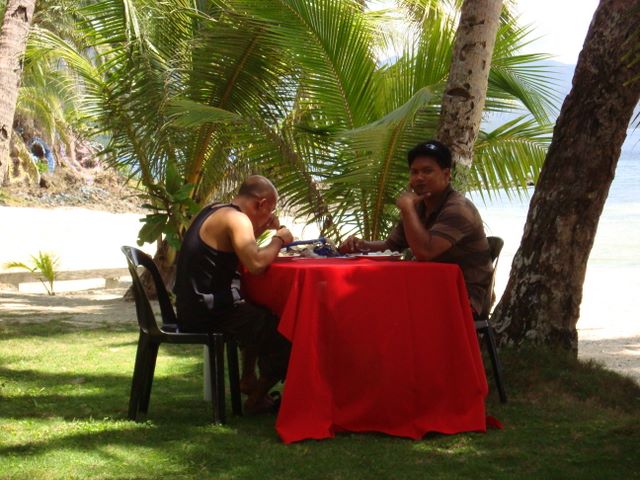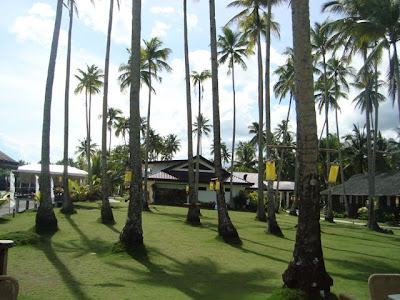I have long wanted to go and see the Agas-agas bridge in Sogod, S. Leyte which is now considered as the tallest bridge in the Philippines. Finished in 2009, the bridge cut across the road going to Sogod which is always prone to landslide as it lies within an earthquake fault. It is 350 meters in length and 75 meters height making it the tallest bridge in the country.
However, just seeing the bridge was not worth the trip, so I decided that we will explore a beach in San Francisco, S. Leyte which is now being considered as the scuba diving capital in the Visayas. This is in Napantao, San Francisco, S. Leyte. I called up the parish priest in San Francisco who happened to be a student of mine in the seminary of our intent and asked him to prepare for us our lunch. With four other priests who were my assistants and a former assistant in the parish and two other lay friends we went for our day off to San Francisco, S. Leyte passing by the Agas-agas bridge.
One thing that I noticed right away when we passed by the bridge was that there was no vibration unlike when one passes by an ordinary bridge. If one keeps his eyes closed he will never perceive that he passed by a bridge. In Agas-agas there is a road leading down to the foot of the bridge where one can better view the magnificence and enormity of the bridge. The description of the bridge says: “ It consists of 3 span cantilever type continuous pre-stressed concrete box girder rigidly connected to hollow box-type pier on 1.5M diameter piles foundation.”
After visiting the Agas-agas bridge we continued our journey crossing yet another island of Leyte, the Panaon island which is connected by a bridge. San Francisco is one of the four towns found in the Panaon Island: Liloan, San Francisco, Pintuyan and San Ricardo. After stopping by the convento on San Francisco, Fr. Joycats, the Parish priest, who already had our food prepared right away brought us to Napantao. We went to a secluded beach in Napantao owned by an unassuming couple, Dr. & Mrs. Cerio. It had a beachfront of its own with a thatch of white sand and shady manicured garden under coconut trees. There on this beautiful spot we had our picnic. We visited first the famous Marine Sanctuary of Napantao which was further down about a kilometer away. The Coral Cay Conservation, a UK-based foundation which is mapping the coral reef in the island had its house nearby the sanctuary. Since we forgot to bring along our snorkels and we could not borrow from the people in the foundation, we decided that we will just come back some other day to do scuba. Today we just enjoy the beauty of the beach of Dr. Cerio.
Indeed, we had a very relaxing day at the beach. The place so private and peaceful it was such a stress relieving day-off for all of us.
























































































